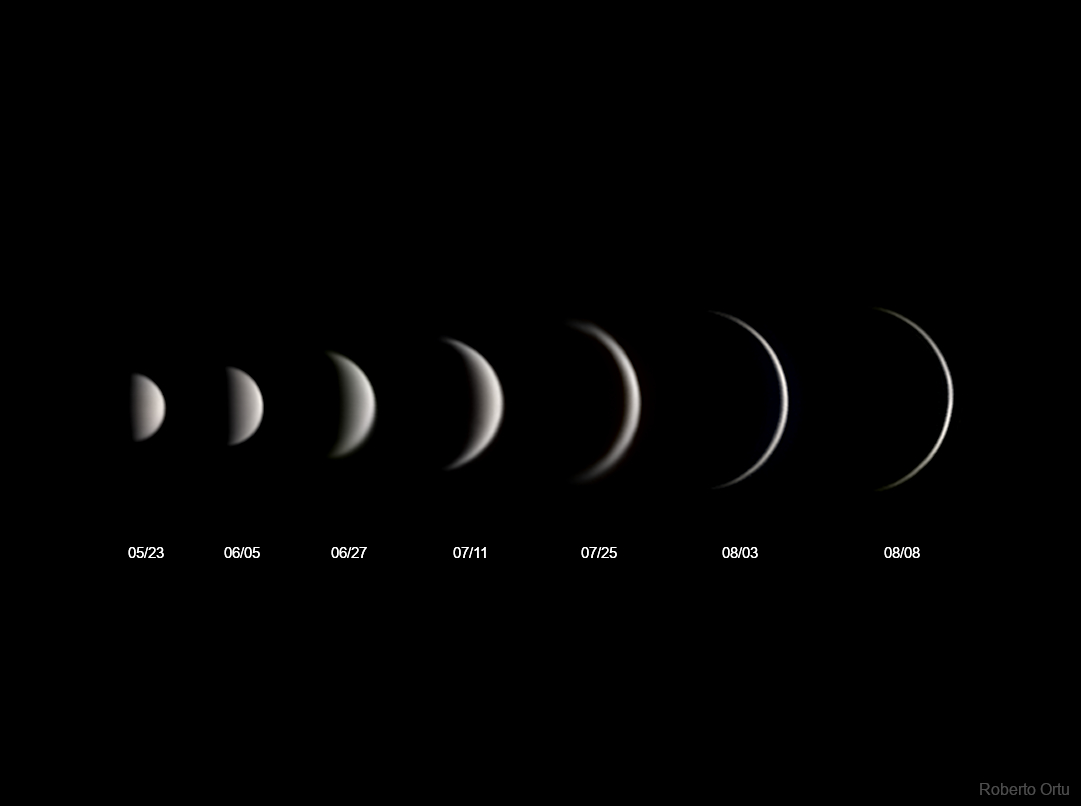Nombre total de pages vues
29/08/2023
28/08/2023
ASTRONOMY - Star Formation in the Pacman Nebula
2023 August 28
Image Credit & Copyright: Craig Stocks
Explanation: Look through the cosmic cloud cataloged as NGC 281 and you might miss the stars of open cluster IC 1590. Formed within the nebula, that cluster's young, massive stars ultimately power the pervasive nebular glow. The eye-catching shapes looming in the featured portrait of NGC 281 are sculpted dusty columns and dense Bok globules seen in silhouette, eroded by intense, energetic winds and radiation from the hot cluster stars. If they survive long enough, the dusty structures could also be sites of future star formation. Playfully called the Pacman Nebula because of its overall shape, NGC 281 is about 10,000 light-years away in the constellation Cassiopeia. This sharp composite image was made through narrow-band filters. It combines emission from the nebula's hydrogen and oxygen atoms to synthesize red, green, and blue colors. The scene spans well over 80 light-years at the estimated distance of NGC 281.
27/08/2023
ASTRONOMY - Three Galaxies and a Comet
2023 August 27
Credit & Copyright: Miloslav Druckmuller (Brno University of Technology)
Explanation: Diffuse starlight and dark nebulae along the southern Milky Way arc over the horizon and sprawl diagonally through this gorgeous nightscape. The breath-taking mosaic spans a wide 100 degrees, with the rugged terrain of the Patagonia, Argentina region in the foreground. Along with the insider's view of our own galaxy, the image features our outside perspective on two irregular satellite galaxies - the Large and Small Magellanic Clouds. The scene also captures the broad tail and bright coma of Comet McNaught, the Great Comet of 2007.
26/08/2023
AERONAUTIQUE - LES INVENTIONS QUI N'ONT JAMAIS VOLE - L'Ariel
ASTRONOMY - Crescents of Venus
2023 August 26
Image Credit & Copyright: Roberto Ortu
Explanation: Just as the Moon goes through phases, Venus' visible sunlit hemisphere waxes and wanes. This sequence of telescopic images illustrates the steady changes for Venus during its recent 2023 apparition as our evening star. Gliding along its interior orbit between Earth and Sun, Venus grows larger during that period because it is approaching planet Earth. Its crescent narrows though, as the inner planet swings closer to our line-of-sight to the Sun. Closest to the Earth-Sun line but passing about 8 degrees south of the Sun, on August 13 Venus reached its (non-judgmental) inferior conjunction. And now Venus shines above the eastern horizon in predawn skies, completing its transition to planet Earth's morning star. On August 21, NASA's Parker Solar Probe completed its sixth gravity assist flyby of Venus, using the encounter to maneuver the probe toward its closest approach yet to the Sun.
25/08/2023
METEO EXTREME - Fort risque de "Medicane" en Mediterranée

ASTRONOMY - A Season of Saturn
2023 August 25
Image Credit & Copyright: Andy Casely
Explanation: Ringed planet Saturn will be at its 2023 opposition, opposite the Sun in Earth's skies, on August 27. While that puts the sixth planet from the Sun at its brightest and well-placed for viewing, its beautiful ring system isn't visible to the unaided eye. Still, this sequence of telescopic images taken a year apart over the last six years follows both Saturn and rings as seen from inner planet Earth. The gas giant's ring plane tilts from most open in 2018 to approaching edge-on in 2023 (top to bottom). That's summer to nearly the autumn equinox for Saturn's northern hemisphere. In the sharp planetary portraits, Saturn's northern hexagon and a large storm system are clearly visible in 2018. In 2023, ice moon Tethys is transiting, casting its shadow across southern hemisphere cloud bands, while Saturn's cold blue south pole is emerging from almost a decade of winter darkness.
24/08/2023
METEO EXTREME - Nuage impressionnant dans le Nord de la France
ASTRONOMY - M16: Pillars of Star Creation
2024 October 22 M16: Pillars of Star Creation Image Credit: NASA , ESA , CSA , STScI ; Processing: Diego Pisano Explanation: These da...

-
2022 September 26 All the Water on Planet Earth Illustration Credit: Jack Cook, Adam Nieman, Woods Hole Oceanographic Institution ; Data ...
-
2021 August 11 Mammatus Clouds over Saskatchewan Image Credit & Copyright: Michael F Johnston Explanation: When do cloud bottoms appe...




